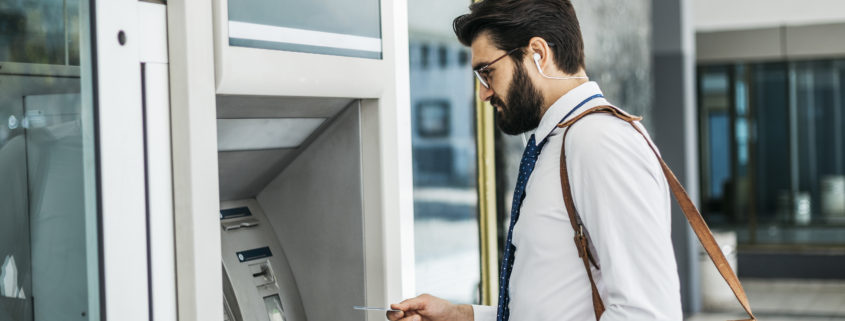How ATMs Work
An ATM, or an automated teller machine, is a common fixture of our everyday lives now. Instead of being limited to a single bank location where you have a checking account, today you can access your funds from an ATM on the other side of the country. It’s a quick and convenient way for us to withdraw cash when we need it, but how exactly do ATM transactions work?
Simply put, an ATM is a data terminal with input and output devices. Like any other data terminal, the ATM connects to and communicates through a host processor, which is similar to an Internet service provider (ISP) in that it is the gateway through which all the many ATM networks become available to the cardholder, or the person withdrawing cash. The host processor acts as the intermediary between the ATM and the bank computer, and these three points are connected through a telephone network.
Parts of an ATM
An ATM has two input devices:
- Card reader: The card reader takes the account information stored on the magnetic stripe on the back of a card, whether it’s an ATM, debit or credit card. The host processor inside the ATM uses this information to route the transaction to the cardholder’s bank.
- Keypad: The keypad is how the cardholder controls the ATM to tell the bank what kind of transaction they want to do, such as a cash withdrawal or deposit. The keypad is also where the cardholder enters their personal identification number (PIN) for account verification. Federal law requires that the PIN block be sent to the host processor in encrypted form, which protects the cardholder from having their PIN be compromised.
An ATM has four output devices:
- Speaker: The speaker provides audible feedback for the cardholder when they press a button.
- Display screen: The display screen prompts the cardholder through each step of the transaction process.
- Receipt printer: The receipt printer produces a paper receipt of the transaction for the cardholder. Many ATMs also allow cardholders to choose to have a digital receipt emailed to them instead of receiving a physical copy.
- Cash dispenser: The heart of an ATM is the safe that contains and dispenses cash. The entire bottom portion of most small ATMs is a safe.
How ATM Transactions Work
The most common use for an ATM is to withdraw cash from a bank account. After you insert your ATM or debit card, enter your PIN and request a transaction, an electric eye in the cash-dispensing mechanism counts each bill as it exits the dispenser. All the information about a particular transaction, including the bill count, is recorded in a journal. The journal information is printed out periodically and the machine owner maintains a hard copy for two years, in the case that a cardholder has a dispute about a transaction.
The cash dispenser also has a sensor to evaluate the thickness of each bill. If two bills are stuck together, they are not dispensed to the cardholder but instead are diverted to a reject bin. Bills that are excessively worn, torn or folded are also sent to the reject bin.
Searching for ATM Supplies?
CONTROLTEK offers affordable ATM supplies for businesses of any size. Explore our inventory of ATM supplies today and contact us if you have any questions!

